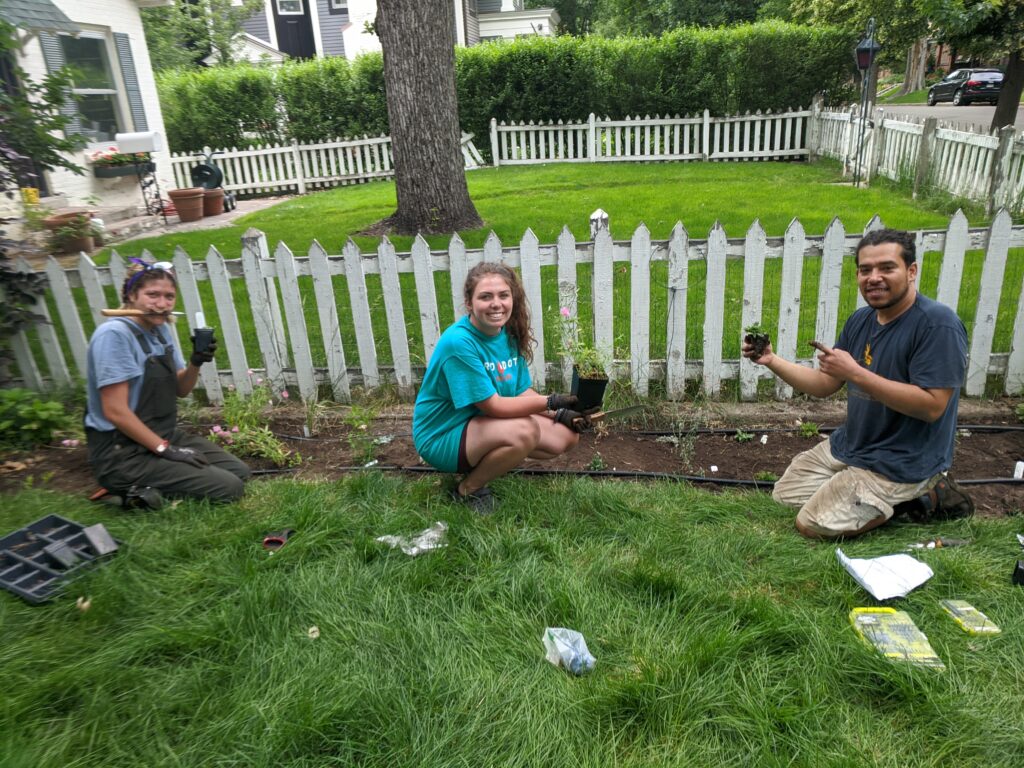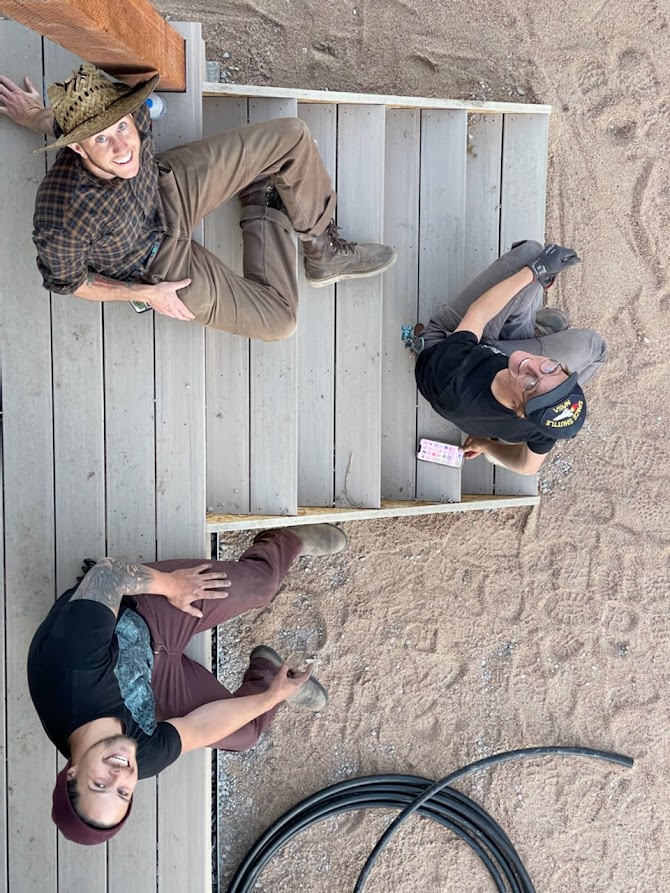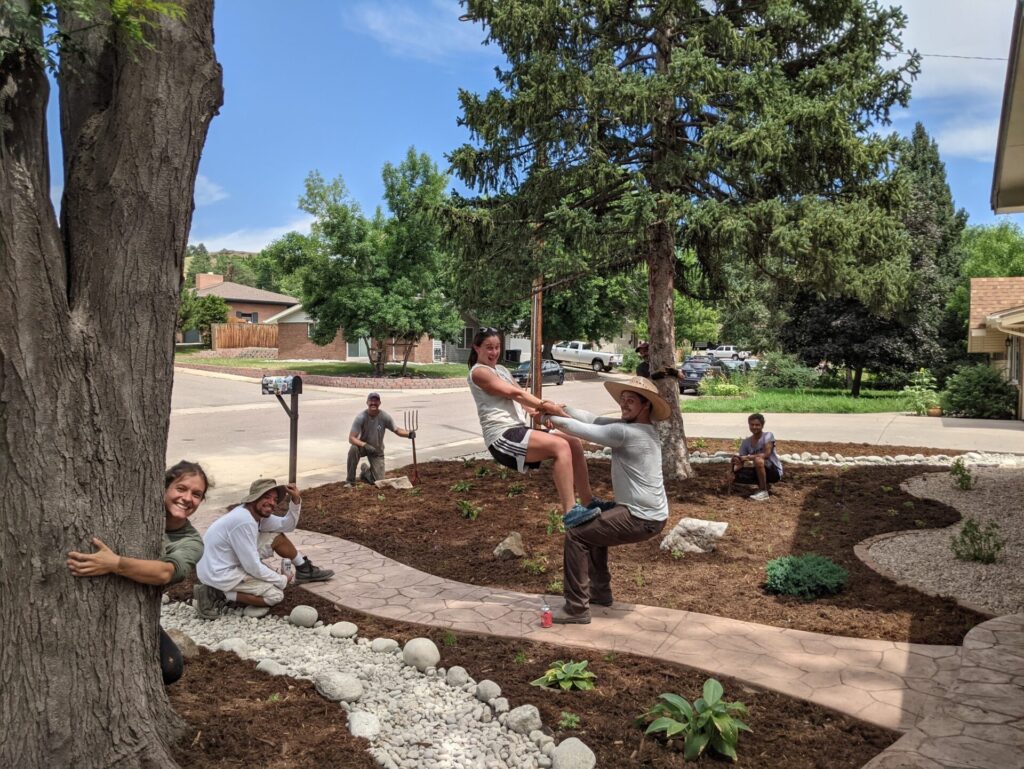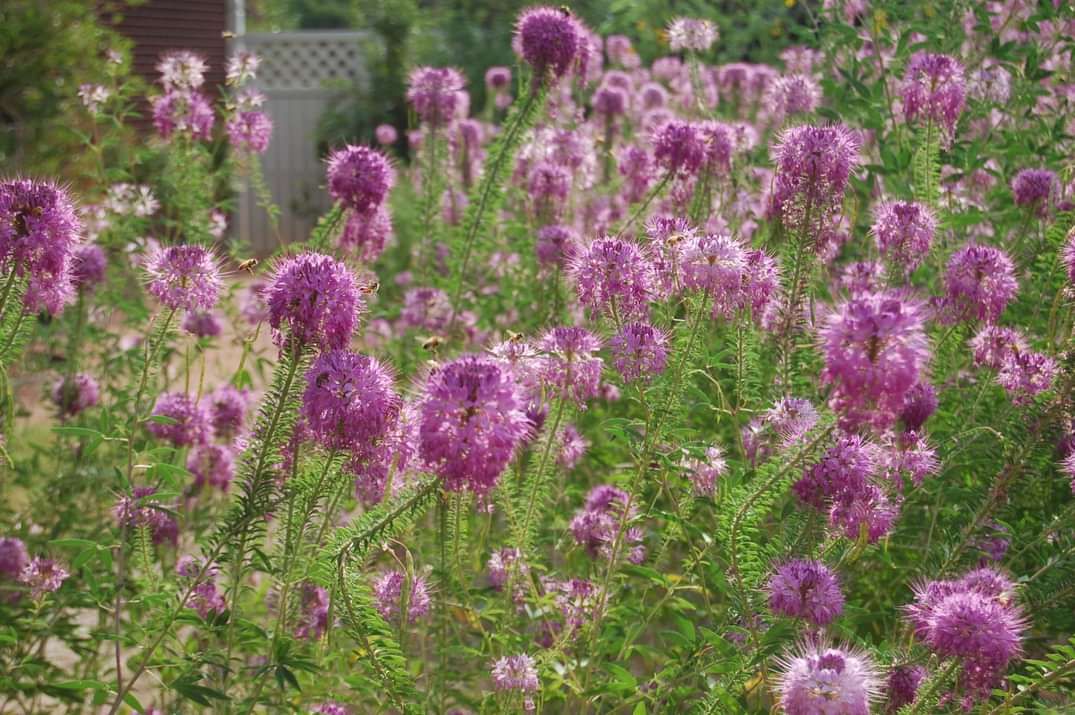
People of all means and abilities should have the opportunity to participate in restorative landscaping. Some of our clients DIY their projects, hire our in-house team to do the labor, or hire independent landscaping crews to install our designs. But those options are not affordable or physically realistic for everyone. So, in the spirit of village barn-raising, we also have an affordable and gentler-on-your-body installation option called “DIY with Help.”
For “DIY with Help” projects, we maintain a network of independent helpers who are passionate about ecological landscaping, and who regularly partner with us to help our clients transform their landscapes. This allows us to organize a small and affordable army, on any given day, to come and plant dozens or hundred of plants in your yard. Check out the videos on our Instagram to get a feel for the vibe.
Important things to know:
- The helpers are not employees or subcontractors of RLD; clients pay them directly and sign a waiver+agreement with them.
- Clients pay for the actual hours that the helpers spend on their project, and are in control of how much help they get vs how much they DIY.
- Clients have to be present on site during “DIY with Help” installs, but they don’t have to break their backs.
- For full-service SPHINX MOTHS projects, RLD team members will manage the installations and co-supervise the workdays with the client.
- For low-budget BUMBLE BEE projects, clients manage and supervise the workdays themselves (with guidance from RLD on how to do that).
What we love about DIY With Help:
- The work days are fun! They are full of people who want to be there. The helpers get to learn new skills, and often make new friends. Sometimes clients get their friends, community, or kids involved in the planting too; play music; and put out snacks and drinks. The clients get to put their sweat and love into the garden and build a personal relationship with it. The “village barn-raising” vibe is palpable, and sweaty, and wonderful.
- It’s affordable for the clients, because RLD’s overhead is low with this installation model. We don’t pay for insurances or other staff costs for this helper network, and we don’t submit a bid with padding in it as in a normal landscaper model. Instead, clients pay directly for the actual hours that the workers spend on their project.
- It’s also a good deal for the helpers, who get paid a living wage of $25/hr.
- RLD can refer helpers to clients for the kinds of work that we don’t do, like weeding. This helps independent gardeners/handymen/arborists/etc get new clients, and helps our clients find quality affordable help.
- RLD hires its staff from the helper network! For helpers, it’s a great way to get experience with ecological landscaping before considering apprenticeship. For RLD, we get to work alongside new like-minded people and source deeper professional partnerships from there.

How does it work?
- RLD collaborates with our clients to choose the workdays and number of helpers needed per day. Helpers signs themselves up for the days when they want to work. RLD organizes the workday, and sets the general rate at $25/hour. (First-time helpers are $20/hr.)
- On site, we teach the helpers any basic skills that they need (e.g. how to plant xeric perennials or fruit trees, dig swales, build rock garden art, or install drip irrigation). We also encourage the helpers to be creative, make suggestions, and have fun. Often we arrange the new plants as a group, with each person applying their own creativity under expert RLD guidance.
- The helpers bring their own tools. For Sphinx Moth projects, RLD brings extra tools, including some very efficient power tools that dramatically speed up planting time.
- Clients pay the helpers directly (via cash/check/venmo/paypal/zelle) after each work day.
- We keep work days short – 4-6 hours on average – in order to be kind to our bodies. Everyone is encouraged to take care of themselves, take breaks or rotate tasks when needed, etc..
- If clients aren’t easefully able to help plant or dig, they can help with creative, spiritual, or social aspects of the process. For example, clients can help arrange the plants; bring cold drinks and snacks to the helpers; sit in a chair on the porch and crack jokes at our expense; or play us guitar while we work. We had one client who said a blessing and buried a crystal, seaweed, and salt under each new plant as it went into the ground, then drummed over the garden after it was finished; that was an amazing experience. The point is for the client to get involved in a way that fits their passions and capacities.
What about liability?
- Helpers and clients sign an agreement that includes a liability waiver. We have an agreement we bring to each project, but helpers and/or clients are welcome to come up with their own contracts if they wish.
- Check out our RLD Labor Agreement template.
- The helpers are not covered by RLD’s insurance, so they only do simple tasks with low stakes (e.g. planting and mulching). For more complex work (e.g. sprinkler repair or professional paths), we install in-house, with only members of the RLD team who are trained and covered by liability insurance.
I am interested in joining the helper network!
- Awesome! Send us an email. We generally have weekly work from late April to early November!

